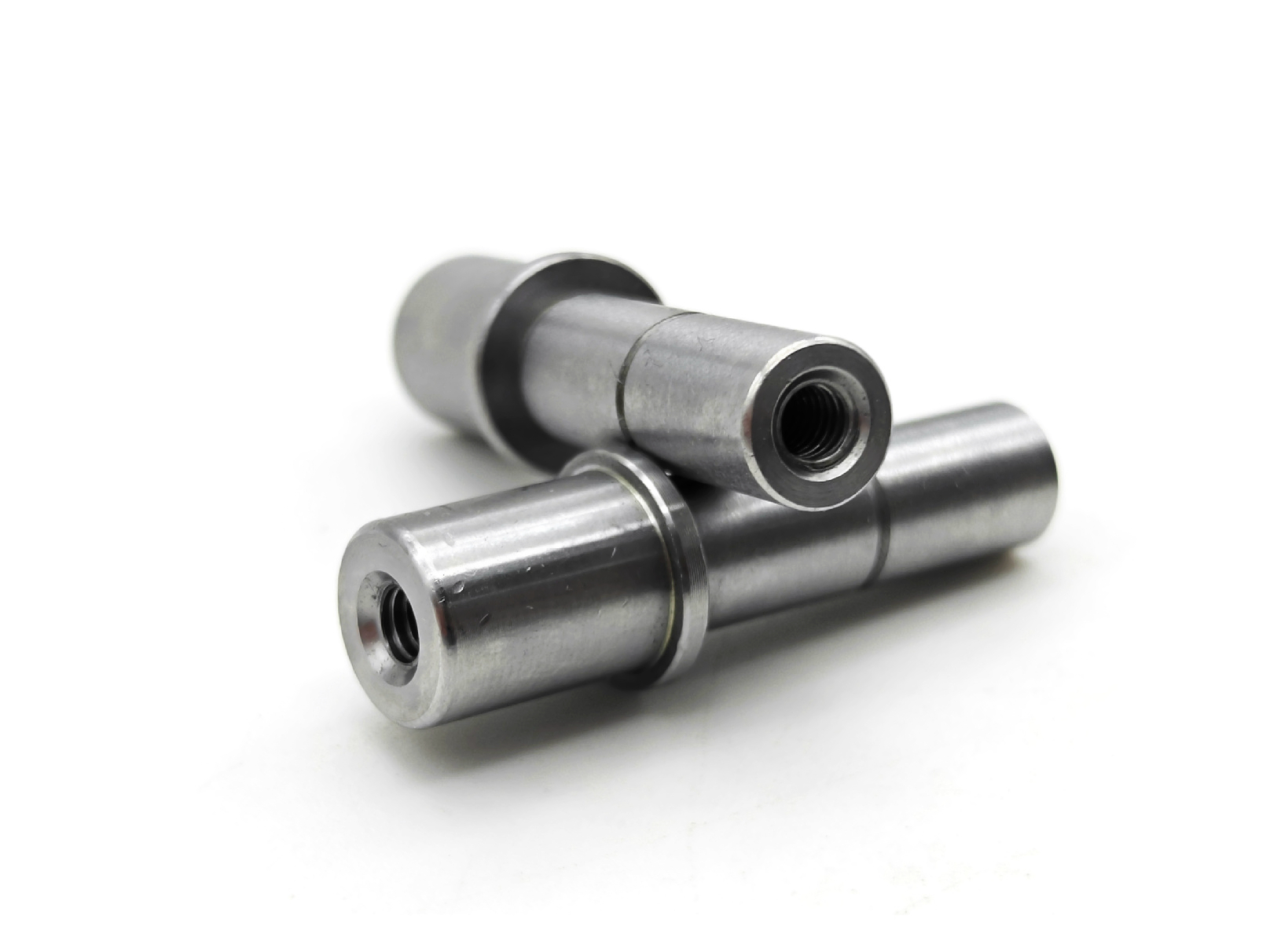From Concept to Execution: Case Study of Deep Hole Drilling in Automotive Manufacturing
Revolutionizing Automotive Components Through Precision Drilling
Modern automotive manufacturing demands ultra-precise deep-hole drilling for critical components operating under extreme conditions. Fuel injector nozzles require Ø0.2-1.5mm holes with L/D ratios up to 30:1, while transmission shafts need ±0.005mm positional accuracy to ensure optimal torque transfer. Traditional methods falter due to chip evacuation challenges and thermal distortion in hardened steels like AISI 4140 QT. Advanced deep hole drilling services now leverage adaptive peck cycles and 1,500 psi high-pressure coolant to achieve these tolerances while reducing cycle times by 30%.
Electric vehicles (EVs) rise introduces hybrid material challenges, such as drilling AlSi10Mg battery cooling plates with 0.3mm wall thickness. Innovations like laser-assisted drilling prevent built-up edge (BUE) in aluminum-silicon alloys, ensuring laminar coolant flow for thermal management systems rated at 15 kW/m² heat flux.
Material Selection: Balancing Machinability and Performance
Material | Key Metrics | Automotive Applications | Technical Limitations |
|---|---|---|---|
950 MPa YS, 28 HRC, 0.5% Cr-Mo alloy | Transmission gears, drive shafts | Requires cryogenic drilling (<100°C) to prevent work hardening | |
330 MPa UTS, 170 W/m·K thermal conductivity | EV battery cold plates | Low melt point (570°C) risks galling; requires pulsed laser drilling | |
450 MPa UTS, 12% elongation, 3.5% C content | Cylinder block oil galleries | Graphite flakes (ASTM A247 Type VI) complicate chip control | |
690 MPa UTS, 0.15% sulfur for chip breaking | Fuel rail components | Reduced pitting resistance vs 316L (CPT >30°C per ASTM G48) |
Material Selection Protocol
High-Stress Drivetrains
Rationale: AISI 4140 QT’s 950 MPa yield strength handles drivetrain loads up to 500 N·m. Post-drilling gas nitriding at 520°C for 48h achieves 60 HRC surface hardness, extending gear lifespan to 200,000+ cycles (SAE J2749).
Validation: Microhardness mapping confirms 0.3mm case depth with <5% hardness gradient.
EV Thermal Management
Logic: AlSi10Mg’s 170 W/m·K thermal conductivity enables drilling 5:1 L/D micro-channels (Ø0.3mm × 1.5mm) using 200W pulsed fiber lasers (1,064nm wavelength), reducing HAZ to <20μm.
High-Volume Fuel Systems
Strategy: 303 stainless steel’s 0.15% sulfur content improves chip breaking efficiency, enabling 25% faster drilling (0.15mm/rev feed) for fuel rails while maintaining Ra 0.8μm surface finish.
CNC Drilling Process Innovations
Process | Technical Specifications | Applications | Advantages |
|---|---|---|---|
Ø0.2-20mm, 0.01mm/m straightness, 1,500 psi coolant | Fuel injector nozzles (Bosch HDEV5) | Achieves Ra 0.4μm in 50xD holes for precise spray patterns | |
Ø5-40mm, 0.03mm surface finish, 3,000 RPM | ZF 8HP transmission shafts | 3x faster than gun drilling; 0.02mm/m taper control | |
0.1-0.5mm Ø, ±0.002mm positional accuracy | Tesla Model Y battery cooling plates | Zero tool wear; 500 holes/min at 20J/cm² fluence | |
20kHz vibration, 0.5mm retract intervals | Aluminum cylinder heads | Reduces chip welding by 90% in 6xxx series alloys |
Case Study: Turbocharger Housing Oil Passages
Component: BorgWarner EFR Turbocharger Housing
Material: AISI 4140 QT (HRC 28)
Drilling Process: BTA drilling Ø6mm × 180mm (L/D 30:1)
Parameters:
Spindle Speed: 1,200 RPM
Feed Rate: 0.12 mm/rev
Coolant Pressure: 1,200 psi (Water-soluble emulsion, 8% concentration)
Result:
Straightness: 0.015mm/m (Per ISO 1101)
Surface Finish: Ra 0.8μm (ASME B46.1)
Cycle Time: 45 seconds/hole (30% faster than conventional methods)
Surface Engineering: Functional Enhancements for Automotive Excellence
Treatment | Technical Parameters | Performance Benefits | Standards |
|---|---|---|---|
2μm thickness, 0.08 CoF, 2,500 HV | Reduces camshaft friction by 40% (SAE J2725) | ISO 3543 | |
NaCl electrolyte, 0.01mm edge radius control | Ensures oil flow consistency (±2% per SAE J1348) | VDI 3400 | |
15μm thickness, 1,200h neutral salt spray (ASTM B117) | Underbody component protection | ASTM B841 | |
50μm dimples, 25% area coverage (20J/cm², 1064nm) | Improves cylinder liner oil retention by 30% | SAE J2725 |
Coating Selection Logic
High-Performance Engines:
DLC-coated valve lifters reduce fuel consumption by 2% (WLTP cycle) through friction reduction, validated via Schaeffler FVA 345 testing.
EV Battery Systems:
Laser-textured AlSi10Mg plates achieve 15% higher thermal transfer efficiency (3.2 kW/m²·K vs 2.8 kW/m²·K) in Tesla 4680 battery modules.
Off-Road Vehicles:
HVOF WC-10Co4Cr coatings on driveline components withstand 5 mg/m³ abrasive dust (ISO 12103-1 A2 test dust), extending service intervals by 3x.
Quality Control: Automotive-Grade Validation
Stage | Critical Parameters | Methodology | Equipment | Standards |
|---|---|---|---|---|
Material Certification | Inclusion rating (ASTM E45 ≤1.5) | Automated SEM/EDS analysis | Zeiss Sigma 300, Oxford X-MaxN 150 | IATF 16949 |
Dimensional Inspection | Hole position ±0.01mm | High-speed optical comparator | Keyence IM-8000, 0.5μm resolution | ISO 1101 |
Flow Testing | 10 L/min @5 bar pressure drop | Automated flow bench | Flow Systems FST1000, ±0.25% accuracy | SAE J1348 |
Fatigue Testing | 10⁷ cycles @150% design load | Servo-hydraulic test rigs | MTS Landmark 250kN, 100Hz sampling | ISO 12106 |
Certifications:
IATF 16949: Zero-defect production with PPAP Level 3 documentation.
ISO 14001: Closed-loop coolant recycling (98% efficiency).
Industry Applications
Fuel Injectors: Bosch HDEV5 nozzles in AISI 4140 with Ra 0.4μm gun-drilled holes.
EV Cooling Plates: Tesla Model Y AlSi10Mg plates with 5:1 L/D micro-channels (laser-drilled).
Transmission Shafts: ZF 8HP Ductile Iron shafts using BTA drilling (Ø20mm × 600mm).
Conclusion
Advanced deep hole drilling services enable automotive manufacturers to achieve 30% faster cycle times and 2x tool life in high-volume production. Our IATF 16949-certified processes ensure compliance from prototyping to mass production, backed by AS9100-level traceability.
FAQ
Why use ultrasonic peck drilling for aluminum?
How does DLC coating improve fuel efficiency?
What certifications apply to EV battery components?
Can AlSi10Mg withstand 200 bar coolant pressures?
Cost comparison: BTA vs gun drilling for transmission shafts?

